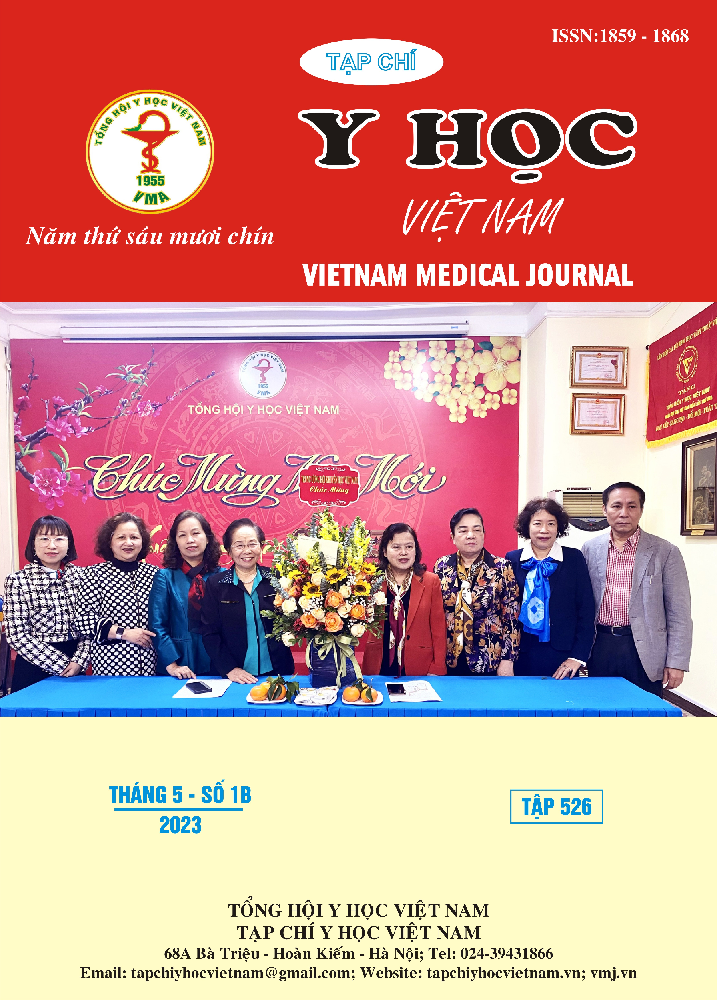EVALUATION OF THE CLINICAL EFFECTIVENESS OF MONOLITHIC INLAY ZIRCONIA IN THE RESTORATION OF POSTERIOR TEETH
Main Article Content
Abstract
This study was carried out on 36 teeth restored with monolithic zirconia when patients came for dental examination and treatment at the Department of Endodontics, Prosthodontic Laboratory, National Hospital of Odonto-Stomatology during the period from June 2018 to June 2019. Objective: To evaluate the clinical effectiveness of monolithic Inlay Zirconia in restoring posterior teeth group. Methods: A case series. Results: After 3 months of follow-up, the restoration ratio achieved good results in the criteria of pulp response, surface smoothness, anatomical shape, occlusal reconstruction, margin discoloration, durability, and patient satisfaction of the restoration are quite high, from 88.9% to 100%. There was no secondary carious lesion. The closeness of the margin of the restoration achieved good results with a high-rate of 32/36 teeth (accounting for 88.9%). Assessing the general results after 3 months of follow-up, the recovery achieved good results, accounting for a large proportion of 88.9% with 32/36 restorations, or quite good, accounting for 11.1%. No restoration had average and poor results. Conclusion: After 3 months of follow-up, the proportion of restoration achieved good results in the criteria of pulp response, surface smoothness, anatomical shape, occlusal reconstruction, margin discoloration, stability, and patient satisfaction of the restoration are quite high, from 88.9% to 100%. There was no secondary carious lesion. No restoration result was average and poor.
Article Details
Keywords
crown, porcelain crown, inlay, effectiveness.
References
2. Dukic, W., et al., Clinical Evaluation of Indirect Composite Restorations at Baseline and 36 Months After Placement. Operative Dentistry, 2010. 35(2): p. 156-164.
3. Schmalz, G. and G. Ryge, Reprint of Criteria for the clinical evaluation of dental restorative materials. Clinical Oral Investigations, 2005. 9(4): p. 215-232.
4. Burke, F.J.T., R. Crisp, and B. Richter, A practice-based evaluation of the handling of a new self-adhesive universal resin luting material. International Dental Journal, 2006. 56(3): p. 142-146.
5. Barabanti, N., et al., Indirect composite restorations luted with two different procedures: A ten years follow up clinical trial. 2015. 7(1): p. e54.
6. Gulamali, A., et al., Survival analysis of composite Dahl restorations provided to manage localised anterior tooth wear (ten year follow-up). 2011. 211(4): p. E9-E9.
7. Karaarslan, E.S., E. Ertas, and B.J.J.R.D. Bulucu, Clinical evaluation of direct composite restorations and inlays: Results at 12 months. 2014. 2(2): p. 70-7.
8. Huth, K.C., et al., Clinical study of indirect composite resin inlays in posterior stress-bearing cavities placed by dental students: Results after 4 years. Journal of Dentistry, 2011. 39(7): p. 478-488.


